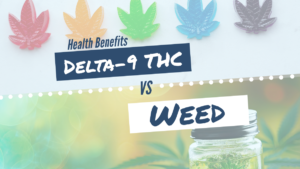Delta-9-tetrahydrocannabinol, commonly known as Delta 9 THC, is the primary psychoactive component found in cannabis. It is responsible for the euphoric and mind-altering effects that people experience when using marijuana. Understanding what Delta 9 THC is and how it affects the body is important, especially in light of the increasing recognition of cannabis use disorders.
Cannabis use disorders have gained attention as a significant clinical issue. Some individuals who regularly use cannabis find themselves seeking treatment to overcome their dependence on the drug. However, maintaining long-term abstinence has proven to be quite challenging for many. This highlights the need for a better understanding of the underlying mechanisms that contribute to cannabis addiction.
The rewarding and positive reinforcing effects of Delta 9 THC are primarily mediated by the cannabinoid CB1 receptor. This receptor plays a crucial role in how THC interacts with our brain and body. When Delta 9 THC binds to the CB1 receptor, it triggers a cascade of events that result in the release of neurotransmitters such as dopamine. This release of dopamine creates feelings of pleasure and relaxation, which contribute to the euphoria experienced by cannabis users.

Interestingly, research has shown that the CB1 receptor also plays a role in mediating cannabinoid dependence and withdrawal symptoms upon cessation of drug administration. This phenomenon has been observed across different species, indicating the conserved nature of these biological processes.
Understanding the mechanisms underlying cannabinoid dependence is essential for developing effective treatment strategies and interventions. By targeting the CB1 receptor, researchers hope to find ways to mitigate withdrawal symptoms and reduce cravings associated with cannabis use disorders.
Altogether, Delta 9 THC is the primary psychoactive component found in cannabis. Its effects are mediated through the CB1 receptor, which is responsible for the rewarding and positive reinforcing effects of cannabis use. Additionally, this receptor has been shown to play a role in cannabinoid dependence and withdrawal symptoms. Further research in this area is needed to develop effective treatments for individuals struggling with cannabis use disorders.
Delta 8 vs Delta 9
Delta 8 and Delta 9 are both forms of tetrahydrocannabinol (THC), but they have some key differences. Delta-8-THC is the double-bond isomer of delta-9-THC, meaning it has a slightly different chemical structure. Despite this difference, delta-8-THC still has similar effects to its counterpart.
One important distinction between the two is their relative potency. When comparing the effects of delta-8-THC and delta-9-THC, studies have found that the latter is more potent. In fact, the relative potency of delta-9-THC to delta-8-THC is approximately 2:3. This means that you would need a higher dose of delta-8-THC to achieve the same effects as a lower dose of delta-9-THC.
In terms of administration, both oral and intravenous methods have been used to study the effects of these cannabinoids. Intravenous administration of ethanolic solutions of cannabinoids, including both delta-8-THC and delta-9-THC, has proven to be feasible and desirable for experimental purposes. In these studies, doses ranging from 1 to 6 mg of delta-9-THC administered intravenously have produced a wide spectrum of cannabis-like effects.
It’s worth noting that relatively simple clinical techniques can detect cannabis-like activity in humans, allowing for both qualitative and quantitative analysis. This means that researchers can accurately measure and evaluate the effects of delta-8 and delta-9 THC in human subjects.
In summary, while delta-8 and delta-9 THC have similar effects in humans, delta-9 THC is generally considered to be more potent. Intravenous administration of these cannabinoids has been used in experimental studies, and relatively simple clinical techniques can detect cannabis-like activity in humans.
Delta-9 THC Buying Guide

Discover everything about Delta-9 THC with Racer Ephedra’s comprehensive buying guide. Learn about legality, benefits, top products, and more. Make informed decisions with detailed reviews and research studies.
References
Hollister Leo E., Gillespie H. K., (1973), Delta-8- and delta-9-tetrahydrocannabinol; Comparison in man by oral and intravenous administration, Clinical Pharmacology & Therapeutics, 14, doi: 10.1002/cpt1973143353.
Ziva D. Cooper & Margaret Haney (2009) Actions of delta-9-tetrahydrocannabinol in cannabis: Relation to use, abuse, dependence, International Review of Psychiatry, 21:2, 104-112, DOI: 10.1080/09540260902782752
Marco Colizzi, Philip McGuire, Vincent Giampietro, Steve Williams, Mick Brammer, Sagnik Bhattacharyya, Modulation of acute effects of delta-9-tetrahydrocannabinol on psychotomimetic effects, cognition and brain function by previous cannabis exposure, European Neuropsychopharmacology, Volume 28, Issue 7, 2018, Pages 850-862, ISSN 0924-977X,
https://doi.org/10.1016/j.euroneuro.2018.04.003




